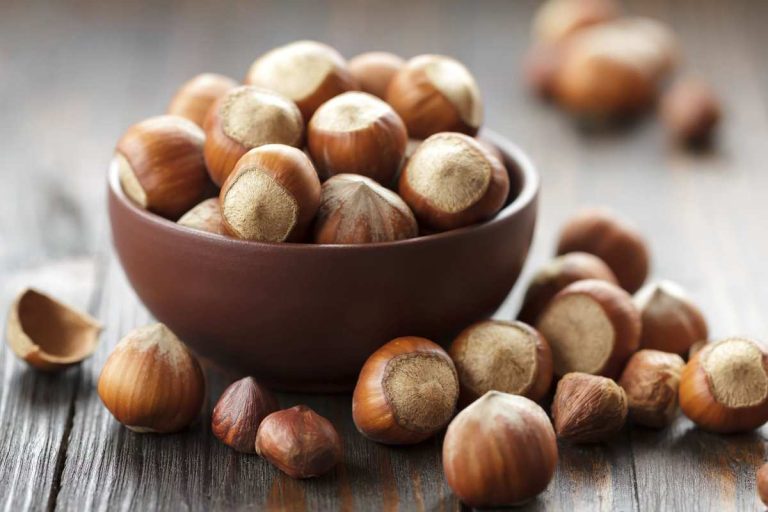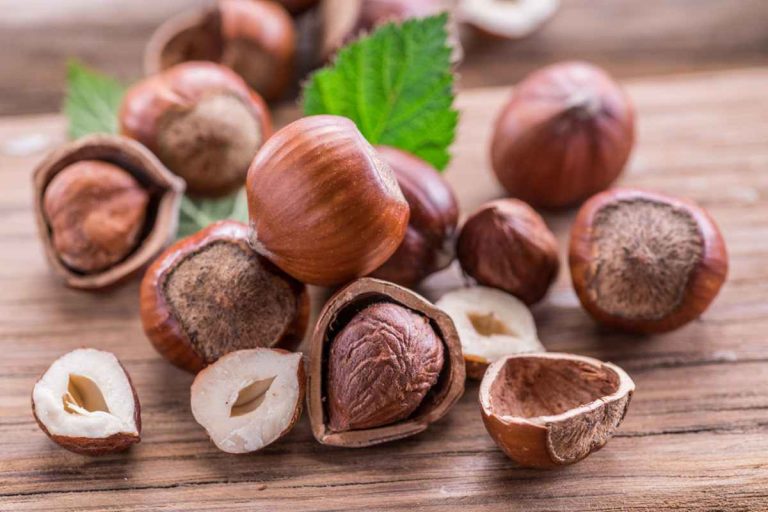Hazelnut is one of the most used nuts in the nut industry. The hazelnut industry is one of the fastest growing in the nut industry due to its taste and benefits. Hazelnuts are used in food, beverage, oil and cosmetic industries.
It is available in crushed, crushed, ground, powdered and white forms. Many pastries, baked goods, frozen desserts, salads and dinners use it as a seasoning.
Because it contains key skin care ingredients, it is also used to make a variety of beauty products, including lotions, massage oils, creams, facial oils, and soaps.
According to Data Bridge Market Research, the hazelnut market, valued at USD 14,944.61 million in 2021, is projected to grow to USD 29,343.76 million by 2029, at a CAGR of 8.8% between 2022 and 2029.
Expert analysis, import/export analysis, price analysis, product consumption analysis, patent analysis, and consumer behavior are all included in market research.
The species Corylusavellana known as hazelnut is also known as hazelnut and coconut. Hazelnuts are rich in vitamins B, E and K and have high nutritional value.

Hazelnuts are a suitable ingredient for vegetarian recipes, because in addition to these vitamins, they also contain minerals, healthy fats and protein.
Both salt and cholesterol levels are minimal. It has several health benefits, including treating celiac disease naturally and lowering LDL (bad) cholesterol while increasing HDL (good) cholesterol.
The hazelnut market is expected to witness a CAGR of 10% during the forecast period (2022-2027).
As a result of COVID-19, people tend to eat nutritious diets that include fruits, nuts, and other whole foods. Most healthy eating habits include nuts, which are rich in lipids and have high energy density.
Linoleic acid, unsaturated fatty acids and protein are found in large amounts in hazelnuts. Compared to other nuts, it has a higher proportion of alpha tocopherol (vitamin E).
Hazelnut consumption may also help control inflammatory and immune responses. As a result, the demand for hazelnuts is expected to increase in the future.
According to studies, eating hazelnuts can reduce bad cholesterol (LDL) and increase good cholesterol (HDL), which increases the demand for it. Hazelnuts are a common ingredient in sweets, including cakes, cookies, pralines, chocolate dishes, and baked goods.
Several companies are entering the market with innovative products and responding to the ever-increasing demand for the product.
In May 2018, Buller, the world’s largest supplier of nut processing equipment, introduced a new combination of sorting technologies that led to natural hazelnut processing systems in Turkey and entered the natural hazelnut market.
Turkey has about 65% of the world’s hazelnut production. Owing to the growing demand for hazelnuts in the chocolate industry, Europe is expected to exhibit the highest CAGR of 7.6% during the forecast period.
The market is expected to expand during the forecast period due to increasing consumer demand and significant health benefits.

Hazelnut Industry
Some of the factors that will drive the growth of the industry during the forecast period include: increasing consumer demand for hazelnut products due to their pleasant taste, increasing demand for various hazelnut essential oil products, increasing consumer preference for organic products, and increasing use of hazelnut extract. In different types. Products
Applications such as pharmaceutical, food and beverage and medicinal use of hazelnut beans.
The emerging food and beverage sector is important for its ability to enhance the taste and value of a wide range of food products.
In addition, it combines low calorie content with a wide range of antioxidants, which increases the demand from the health-conscious population.
Increasingly profitable opportunities are fueled by the launch of new food and beverage companies, increasing demand for organic malt ingredients and extracts, and growing acceptance of natural flavors.
However, the use of synthetic items above a certain threshold and established regulations that bypass worker safety interests prevent market expansion.
In addition, market expansion has been hampered by changes in commodity prices, supply shortages, and less agricultural technologies.
The impact of COVID-19 on hazelnut production
Global market demand for products made with natural ingredients has increased dramatically due to COVID-19. In this regard, the natural hazelnut market has significant development opportunities worldwide, especially for use in functional foods and beverages.
Hazelnut production also requires a lot of work, especially during the harvest and post-harvest periods.

As such, they rely on seasonal workers, many of whom are migrants. These employees are affected by COVID-19. For example, if their temporary accommodation conditions do not meet high hygiene standards and social distancing is observed, they may face serious health risks.
New development
In July 2021, Italian food company Fabulous will launch a range of organic hazelnuts and cocoa made from a combination of chickpeas, cocoa and hazelnuts. Orange Savory Hazelnut and Crunchy Hazelnut have been introduced after the original Cocoa Hazelnut.
Nocciolata Crunchy, a new hazelnut spread from Italian company Rigoni di Asiago, will be available in April 2021. This is an organic hazelnut spread with 22% hazelnuts, made from roasted hazelnut kernels.
To trace the hazelnut value chain, Ferrero partnered with Sourcemap in January 2021. Using the Sourcemap platform, Ferrero will be able to collect key information on social and agricultural practices, evaluate the value chain with data science and drive productivity improvements.
Hazelnuts come from species of the genus Corylus. Hazelnuts are sold shelled, whole, cubed, sliced or with ground kernels. The market is geographically segmented.
For the purposes of this report, hazelnut inshell is considered and the report covers production, consumption, import, export and price trend analysis in hazelnut markets around the world.
The report provides the market value and forecast value (in thousands of USD) and volume (in tons).

Demand from the chocolate industry is strong
The global confectionary business has seen innovation in taste as chocolatiers reintroduce their signature products with a range of hazelnut-infused products. Like peanut butter, chocolate nut butter is becoming more and more popular.
Thanks to a growing number of food companies starting to make their own versions, the spread is now sold in most major grocery chains.
In 2018, the famous chocolate maker Lindt introduced a chocolate spread containing 40% hazelnuts to the UK market.
While the song debuted in the UK, it is expected to be available in other European countries as well. Similarly, M&M’s introduced their Chocolate Hazelnut Spread, which has a beautiful milk chocolate shell with a hazelnut spread core.
Hazelnut is the main ingredient of some Ferrero brands such as Nutella, Ferrero Rocher and Kinder Bueno. 25% of the world’s hazelnuts are used to produce Ferrero products.
Nutella has become a global food craze, with Nutella attacks, fan-favored World Nutella Day, and the opening of Nutella bars in the United States.
The growing demand for hazelnuts from industries that cater to the growing demand of global consumers is a result of the growing popularity of Nutella.
Demand for hazelnuts is on the rise as chocolatiers relaunch their products for the holiday season, combining traditional and Western styles, often with luxury nuts embedded in the chocolate.










